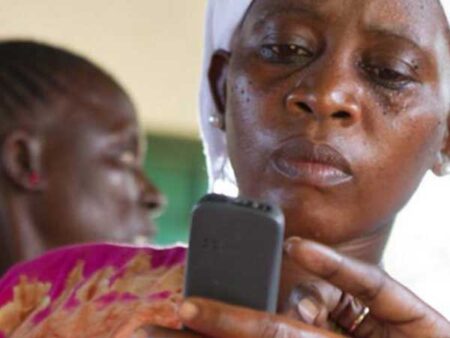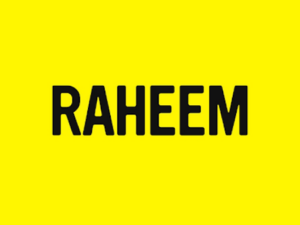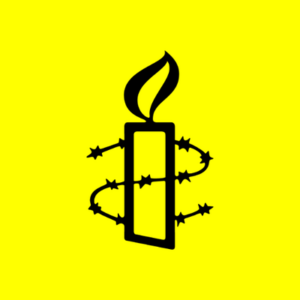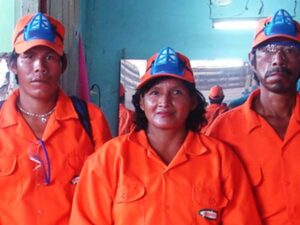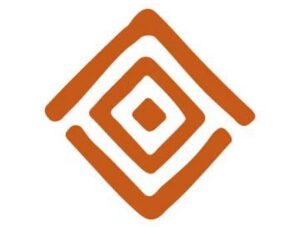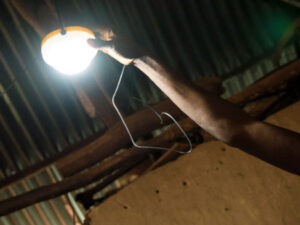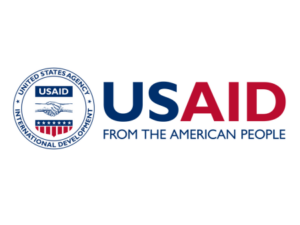Medic develops accessible toolkits and digital tools for health workers in the community to help them serve their local communities. The resources are fully open-source, allowing for more innovation and fewer financial barriers.
Emily Michael of Medic spoke with Jessica Kantor on February 21, 2023. Click here to read the full conversation with insights highlighted.
Jessica Kantor: The question that we want to start with is can you describe the problem that you are addressing and how you are responding to it?
Emily Michael: I think that Medic as a technology, nonprofit global health organization sits at a bit of an intersection, but the main problem we’re addressing is that half of the world’s population cannot access a health facility. The facilities are either too far, they’re understaffed, they don’t have resources. We’re talking about facilities that if there’s a woman who gives birth in the middle of the night, they’re opening the fridge that was sent by the USA to house vaccines for light. We know that through the pandemic, all of the information that all of us got everywhere in the world was from facility-based care. If half of the world’s population is not getting their care in a facility and all of the information that we are gathering about what’s happening in the state of health around is coming from facility-based care, we’re missing the care that’s being provided to half of the world’s population.
In some cases, that means that these people aren’t getting care, but in many cases it means that they are getting care outside of the formal health system, often facilitated by a community health worker, which is more often than not a woman who’s volunteering to take care of her community, sometimes going around to a hundred households and saying, “Where is there a pregnant mother? Did she deliver in a facility or at home last time? Was her child still born? Is there a child in this community that’s suffering from malnutrition or malaria, or is there a respiratory virus going around that we don’t know what it is, but we need to track it?”
What we are looking to do is bring very simple user-centric digital tools to the hands of community health workers that can then, in their more nuanced ways, be tied into a more formalized health system. We’re starting at the community level. We’re saying, “How do we empower a health worker to take care of 500 people?” If someone came to me and said, “Go take care of 500 people, you know nothing about health, but just ask them some questions,” I would want to know how I would know who’s in a household? How do I know what question to ask next? If someone says that their child has a fever, when do I go back and check on them? At the very base, it is a decision support tool. If a child had a fever, in three days you’re going to get a reminder to go check up on that child and make sure that they’ve recovered. And if they haven’t, we’re going to provide more questions to ask.
It’s how to ensure that children are getting vaccinations. It’s how to ensure that a woman knows about how far along in her pregnancy she is so she can plan for a facility-based birth. It starts with that really simple, straightforward decision support. And it can be run on a feature phone, on a smartphone. It starts offline first, so no mobile connectivity is needed at that moment, but it’s gotten to be a really robust technology that can be integrated with national databases. The big one is called DHIS2 for tracking how many births and deaths there were, how many cases of disease there were, and how many follow-ups are necessary to encourage behavior change. Then it can tie in at every level of the health system from then on.
It can tie into facility-based care. If someone is screened for a non-communicable disease and they find out that this person is hypertensive and they need to receive care for that, they can be referred to a clinic, get care for hypertension and come back and have a set of tasks set for the health worker to follow up and ensure continuity of care. That’s so critical in disease management, while also bringing visibility to what care is needed in these communities so that we can properly resource and support it, and have visibility into the true need of what it will take to provide universal health coverage.
Jessica Kantor: How are you engaging with the different parts of the community directly?
Emily Michael: We built a digital platform that’s fully open source and publishing it on an open source license means that anyone who can develop apps can come to us and say, “What are the best practices for workflows for clinical workflows in community health?” We’ve been really intentional about ensuring that those are easy to build and easy to access. Right now we are accompanying six ministries of health as they are taking this moment to realize, they have under-invested in this huge portion of healthcare for as long as it has existed, and how can they bring them into the fold? We are engaging with NGOs who already have contracts with community health workers that they are working to streamline and empower through digital tools.
We’re also working with ministries of health to say, “How does this fit into a formalized health system? How can we ensure that community health workers have the opportunity to be professionalized, to be supported, to be equipped so that they can continue to provide that level of care?” We’re starting bottom up where we’ve been for the last 10 years, and now have the opportunity to come at it with national governments, with global aid groups behind us and say, “How can we also take this from the top down while bringing the best practices of what we know through human-centered design into this lens of what can be created on a national scale?”
Jessica Kantor: What about your approach is distinctive from others who are doing similar work in the field?
Emily Michael: I think that the fully open source license is a real differentiator. We know that community health is going to be the least resourced level of the health system. It is the hardest to reach. It is the most remote. So when we’re thinking about building digital tools, we know that if you’re choosing between whether you can get a health worker a cell phone to use digital tools, or whether you need to pay a license fee for every single one of those health workers every single month, the resources run out. They are finite. By creating an open source platform that anyone can build on without Medic’s involvement or our help means that more of those resources can go towards patient care. More of those resources can go towards paying health workers. More of those resources can go towards getting the commodities that are needed to provide that care than they are paying for the proprietary technology.
What’s different about Medic and our platform, the community health toolkit, is that no features are proprietary, no scale is proprietary. We don’t say that it’s free for the first 50 users. We don’t say this bucket of off-the-shelf features is free, but for more bespoke things, you have to pay a proprietary fee every month. It’s all fully open. Everything we learn is fully open, so that there is a player in this game that isn’t looking to make markets. We aren’t looking to extract data. We are really looking to provide a pathway for digitized community health in the most financially sustainable way that we feel is possible.
Jessica Kantor: In order for people to engage with your work, do they need access to the internet?
Emily Michael: In order to build apps, they need access to the internet. In order to be a health worker using our tools, you don’t. All of our tools work offline first. We know that in very remote settings, there might be one place that a health worker can go to connect to the internet and that can sync up all their data, or they might need to borrow their neighbors’ or use a solar charter or whatever it might be in order to have that moment of connection. It’s really critical that out in the field when they’re actually doing the work that no connectivity is needed to have any of the decision support or to bring up the households they care for. So yes, to build an app they do need the internet. And all of the work that we have available is through a GitHub documentation site where anyone can download code and tools and start working immediately. But when out in the field, the internet is not required to use any of these tools.
Jessica Kantor: Is part of your solution providing those tools to the workers, or is that where your partnerships come into play with different NGOs in the area?
Emily Michael: It’s both. We don’t manage cadres of health workers. We think that there are other groups that do that really effectively. Our role is ensuring that NGOs have tools that meet their needs because all of them have slightly different models for how they’re managing health workers and what resources they’re able to provide to them through training or tools or kits, et cetera. Our role is ensuring that people who are deploying community health systems have the tools that meet the needs of those context specific systems.
Jessica Kantor: Do you have an example that illustrates the impact of your work?
Emily Michael: Absolutely, and a lot of these are couched within larger models. So when I talk about work that we’ve done with Living Goods, we can’t say it’s because a health worker had a cell phone that someone’s life was saved. We’re really cautious about that. But in highly effective systems in Kenya, Uganda, and Mali, we’ve seen a reduction of child mortality by 30% when you have digitally equipped community health workers. We did a feature release for universal health coverage in Mali in concert with Muso, which is a CHW organization there. We focused on a specific user interface change to let a health worker know how long it had been since they had been to a certain household, universal health coverage and coverage rates increased by 50% in an area where they were already stronger than anywhere else in the country.
We know that not only can digitally equipping health workers make a difference, but even small adjustments to user interfaces that are designed thoughtfully through human-centered design can make a difference in how communities are seen with what regularity, with what speed, with what equity, so we take that really seriously. That is a big realization for people not to just be after data, but to be after the design of the tools that are being used in these communities.
Jessica Kantor: You shared a little bit about the statistics of how things have increased with digital access. How do you measure success specifically?
Emily Michael: We’re really thoughtful about the data that we collect. We are taking a values-based approach to what data we collect. We have a number of research partners where we examine questions like how did this change really couch itself within a health system? We measure success by looking at how many workflows a given cadre of community health workers is able to implement. There might be some community health workers that are only seen as being able to provide services for mothers and children and that’s really important. But there are also situations where they can treat for voluntary male circumcision follow up, they can treat for HIV AIDS, they can treat for tuberculosis, and they can treat for NCD continuity of care. So we’re measuring success not just by the number of health workers, but by the level of holistic care that they’re able to provide a household.
A health worker might walk into a household and she’s got a phone from PEPFAR and a phone for malaria and a phone for the mom and a phone for the babies, and they’re having to redo all of this work. If we can create a holistic model of care for them to go in and care for all members of the household, not only does it mean that there’s more care being provided, but it also means that men in these households are receiving care and they’re more likely to champion the care that the women in the household are receiving if they are getting value for the entire family.
One of the ways that we model care is how many times care was supported by the community health toolkit, that’s the name of our platform. By saying this same number of health workers can now support care five times more in each visit, they can now support this many more types of interactions, that shows us that we’re increasing the professionalization of CHWs because they’re receiving training, they’re receiving trust, and they’re receiving more exposure in the community. It also shows us the level of interaction with the technology that we’re creating because it’s being used in more advanced ways, more regularly and to a deeper extent than it might have been before.
Jessica Kantor: What is some other evidence that you’re making progress?
Emily Michael: We look at evidence with our partners. As we’re doing research studies, we work really closely with partners in health, with Muso, that I mentioned, Living Goods, BRAC. And we go in and do peer reviewed studies with them. Looking at independent studies we’re able to see what happened in a cohort that wasn’t digitized or supported and what happened afterwards. And like I said, we are really conscious about saying the one thing that made the difference was the cell phone and the digital tool. We don’t want to claim that a cell phone can save someone’s life, but we know that it makes a really big difference in these programs because we see the impact that’s being had by non-digitized community health workers and the level of advocacy that they’re able to do for their own communities and professionalization compared to when you’re able to back it up with digital data that is trusted and equipped for those health workers. I apologize that I’m giving you a bit of a roundabout answer here, but we are really conscious in claiming impact when it might be correlation.
Jessica Kantor: What are some insights that you have taken from your work that others could use if they’re trying to not necessarily replicate your model, but just learn from what you’ve done?
Emily Michael: Absolutely, start with, we would love for others to replicate our model. We think a huge success is anyone going and building digital tools for community health workers. There is such a huge need that we exist and our model is such that it can be replicated and we want it to be. Our dream and goal would be for more people to be replicating what we’re doing, and if they’d like a headstart using the CHT, then we’d love for them to take it and run with it.
Some key learnings for us start with the health worker, and it can be easy not to do that because there are a lot of other stakeholders at play. There are donors, there are research institutions, there are global funders, there are ministries of health, and everyone has an idea of what information is needed, what data we want to connect, what can we gather, what market can be made.
What we believe really deeply is that we exist to make the health worker’s job easier so that they can provide better care for their neighbors. I think if we all start there with these communities in mind and the humans on the other end of our technology in mind that we can have very different conversations with ministries, we can have very different conversations with donors. We can talk about sustainability, we can talk about local ownership in a way that is serving communities and not just the hot ticket items of global aid.
The thing that I would really want to be replicated of our model and things to learn from us is how deeply we value the care workers and the communities and what they need and our spirit of openness in that everything that we learned we want to make available. There’s no space to not do that. The stakes are too high, there’s too much of a gap. There are too many people without care for us to not be open about what we’re learning. Deeply thinking about the communities and what is best for them and how to show the most respect possible to the communities that each of us are aiming to serve.
Jessica Kantor: What are some things, maybe early on or it could be recent too, but maybe some choices that you made that didn’t necessarily work out or that you learned a really large lesson from because you did a certain way and you learned not to do that?
Emily Michael: I think that the pure need that you have to be an app developer to know how to build on our system, that’s both a barrier and a strength. It means that we can create really thoughtful apps that are context specific, that have different cadres of health workers in mind, that have different disease workflows in mind. But it also means that you have to be an app developer to build on our tools. There’s some middle ground there and there are values in each way. But I think that’s a lesson that we’re continuing to learn and it is something that we continue to think about when we talk about our users. We are absolutely talking about health workers, but we’re now entering a phase since we open sourced the CHT and looked at building this community of app developers around the world and it has meant taking a look at, can a community of app developers come build on these tools? Does it matter that it’s open if no one can build on it? And that’s not the case.
We have taken the last couple years since launching the community health toolkit in 2018 to say, “How do we need to change our architecture?” And this gets into the nitty-gritty of the tech. How do we need to ensure interoperability standards are being met and really leveraged? How do we ensure that a six-month onboarding period for an app developer wanting to come build these tools is actually just two weeks? That’s taken a huge investment and is one of the reasons we’re so grateful for our donor and philanthropy model is that we’ve been able to make those investments and those changes to build a community.
In some ways we approached it and said, “Great, it’s open. Anyone can come.” But it’s also examining what are the barriers that entrepreneurs might be facing in building on open source tools. They might say, “If I can’t charge a license fee, then I can’t make money, or if I can’t charge for these different services, then how can my own business be sustainable?” So we’ve had to go back to the drawing board or revisit our thoughts on that and say, “How can we help break down those barriers both in how we are building our backend and ensuring that there’s more reference materials available?” We didn’t have a documentation site until 2020 and it was like, “Oh my gosh, we have all this information. Just put it out for copy and paste anywhere.” There are lessons in how to make it easier for the community to come build on these tools independently without Medic’s help.
One of the initiatives that we launched is an entrepreneurship accelerator where we did a very large call for Africa based entrepreneurs that are working in the tech space and had interest in working in community health or were already working in community health and saying, “What innovation do you have? Would it help if you could integrate it into something that is going to scale in Kenya and Uganda and other countries around the continent?” We’re just launching that and we’re just learning. But one of the biggest barriers was, yeah, we want to do that, but that takes time and time takes money and we’re paying rent and we’re a smaller shop. So we’ve been able to fundraise to provide grants in order to onboard and capacity build for entrepreneurs in East Africa where we know that there’s a demand for the tool because the government is the demand.
We can then say, “You now know how to build on the CHT. You now know how to support the government, and now the innovations that you are coming up with can be integrated into this model that’s going to be delivered through 95,000 community health workers.” It’s providing that next level of innovation that, as one organization with 90 people, we can’t do. But we really want to foster that so what we’ve been in the process of learning is how to create that community and how in our position as an international organization it is our responsibility and our true joy to be able to facilitate that level of innovation and participation in a global community.
Jessica Kantor: Thank you for sharing not only the lesson but how you are immediately trying to address it. Aside from raising sufficient funding and what you just spoke about, what are some other challenges that you’re currently facing or that you faced in the past but you weren’t able to overcome or solve?
Emily Michael: I think there is beauty in the challenges, in the level of competition. We aren’t the only platform and that’s great. There’s so much green space. There are other models that have different features and have different abilities, and that’s something that you can’t always overcome. A lot of the tools are very similar, but then there are some that might charge a fee, but they also might have this feature that would be really helpful. And we haven’t built it yet because we don’t have the resources yet to do it. That’s something that is always a challenge to overcome. There’s also a level of dialogue about digital tools and about technology as a whole, that you’re always going to be bound a little bit to what the hot technology is. What is the hottest new standard? What are people talking about up here that doesn’t actually make a difference for health workers, that sometimes you can’t get around?
We really believe that we shouldn’t be building things for the international community. We want to build things that are in line with standards, but if they’re not going to be used by health workers then they’re not going to be helpful. That’s a constant challenge in technology because there might be a new great global standard that we can and will align with, but next year it’s going to be a different standard. What does it mean for health workers if we’re continually having to do these really substantial updates? Does it mean downtime for them? Does it mean learning a new way of interacting with the app? What does it mean for them if we are keeping up with technology and global standards for technology?
We’re very well aligned to open HIE standards. We’re looking at fire standards, all of the hot button topics, but it’s a constant challenge of what are we building and why, and what do we have the resources to do? We are 10 out of 10 times going to put those resources towards tools that are helping health workers and having to have the hard conversations about why we might not have resourced a different change in our technology that might be more attractive to the funder community. That’s a double-edged sword because you have to play into the funder community in order to be able to provide the tools. I think that one of our biggest challenges is really sitting with the why for everything that we’re building and making sure it is still aligned with our mission of helping health workers provide quality care.
Jessica Kantor: Do you have any other limitations that you haven’t already mentioned?
Emily Michael: As an open source platform, we’re limited by other open source tools that we build upon. When we were redoing our architecture so that it was capable of horizontal scale, as we’re looking at these projects that are going to have 95,000 health workers rather than 5,000 or 6,000 health workers, we had to send our team to intentionally build up the capabilities of the open source tools that we rely on for our foundational building blocks. We have this deep commitment to openness and to building on open source and to keeping our tools all license-free. But that means sometimes that we need to step into the ecosystem and bring all of the tools that we use as foundations that aren’t ours, but we are a member of the community, we need to bring them up to meet the needs of the needs that we’re seeing in our field.
That’s also a big challenge because how do we make sure that we have the staff on hand to do that? How do we make sure that our needs are included in the roadmaps of other global goods? Being a really solid member of the global open source community is a constant challenge as all of the tools are evolving, sometimes in different directions. That’s a big part of what our product team does, seeing where we fit in, what we need to bolster, how we can work around, and what tools we should be integrating with, which we’re able to do because we’re funded by philanthropy. If we weren’t, we wouldn’t be able to have this model. We wouldn’t be able to take the time to build those foundational building blocks and we wouldn’t have the ability to continue to offer our tools as fully open source.
Jessica Kantor: Are you working towards advancing systems level change?
Emily Michael: I think so, and I think part of that is in the visibility that we’re bringing to the work that’s already being done by community health workers. We are looking to influence systems in how health workers are being regarded, how millions of mostly women are being professionalized, because we think there is a real threat as community health worker jobs are being professionalized, sometimes it doesn’t mean that the women who have been doing this job for generations are now paid. Sometimes it means that this is now a professional job, so it’s an option for a man. What we want to show through our partners, through our research to ministries, is that the women who are doing this work can be trusted because here’s their high quality data, here’s the work that they’re doing, here’s the impact that they are already having on their communities. They should be paid, they should be supported, they should be professionalized.
That is a big shift in systems, especially in these countries and communities where women’s work can be devalued. Right now, the level of volunteerism that millions of community health workers are doing is leading them to be the world’s largest philanthropist because of the amount of time that they are donating. If we can change that dynamic and bring paid professionalized community health work positions to the women who already hold them, then we’re changing the shape of those communities, we’re changing the independence of women, we’re changing the role that they play in their communities and their societies. So that’s one level of systems change. And then when we look at the technology space, we’re really examining how a fully open source tool can scale through community and not just global community, but how it can be owned locally.
I use this analogy every once in a while where if someone landed a helicopter in my front yard and said, “You own a helicopter now,” I’m not a helicopter pilot. I don’t have access to helicopter fuel. I’m not a helicopter mechanic. I don’t know how to communicate with flight systems to let them know that I’m taking off safely. So do I actually own a helicopter or did someone just park something on my lawn to rust? And we think about that with the digital health systems that we’re building. If we are working with the Ministry of Health and say, “Great, we built this for you. You own it now,” but we aren’t creating an entire ecosystem to support that Ministry of Health, do they own the health system? Do they own the data? Do they own the ability to make changes? Do they own the ability to support the communities in the way that it was designed to? They don’t.
We think it’s really critical in this system’s building to say, “How are we equipping entrepreneurs in their country to build an ecosystem of support for ministries of health? How are we creating capacity within INGOs that might have only been doing CHW on the ground, but now have this level of digital capacity and maturity so that they can also offer this to health worker cadres maybe in other countries where the ministry isn’t involved yet? How can we go into a ministry and say, “Here are the staff that you should have on hand so that you can do this independently as well within this ecosystem?”
That system change of open source is even an option that can be sustained locally, that data can be owned locally, that it can be owned by a community, in itself is a revolution. We are trying to create an ecosystem where we can back away from every implementation that we initiate because we will have created so much capacity for long-term sustainability. And that is really exciting for us and we hope will, if not change the entire field, at least ensure that there’s an option for that.
Jessica Kantor: You actually started answering my next question, which is what’s most needed from other partners in order to advance systems level change? Is there anything else that you’d like to add?
Emily Michael: I think that there needs to be a willingness where there is readiness and capacity of ministries to say we want to invest in open source. There needs to be a willingness by the global community to support that vision and to respect the autonomy of communities in saying we want to build our own tools. I think that some of that is coming. We hear Samantha Power at USA talking about local innovation and how even the USA can be making more grants available specifically towards local innovators. But we have to see more of that in actual action. That’s one part of the project that we’re doing through our accelerator, doing assessments so that we can come back to these big actors and say, “Here are the barriers. They’ve told us, we’ve seen them, we’ve assessed it. Here’s what we need for local ownership of innovation to truly take shape with the backing of the global community.”
We know what people are capable of. It doesn’t just live in the global north, it doesn’t just live in the global west. And it’s naive of us to think that it does. It’s naive of us and really wrongly put for us to think that we should be the holders of knowledge. The hard ticket we all need to accept is that it’s not our data to own in the field is a very radical idea and will be very challenging to change. That is something that I would love to see, for all of us to recognize data as the resource that it is and recognize our role in extracting data from marginalized communities and what that means for them. And what are the models of technology that put the most respect and the most privacy and the most consent towards the communities where they’re being deployed.
Jessica Kantor: How do you see your work evolving over the next five years?
Emily Michael: We’re just launching our strategic plan in the next month or so, but it’s really looking at how we can play a role at the ministry level. Where there’s ministry readiness, how can we come in and say, “Here’s what we’ve seen work. Here’s this coalition approach of the NGOs that are working with community health workers, the other groups that are doing digital health, of the people doing digital health at the facility levels that are serving some of these same communities.” Where can we go and provide our services to ministries to say, “Here’s how to build this ecosystem. Here’s what we know works. How do we examine how that differs specifically for your country? And how do we ensure that the needs of communities are being met through this really collaborative approach?”
That’s where we see ourselves in this moment. How can we both steward this open source platform so that it continues to meet the continually advancing opportunities for community health. How do we really invest to make sure that the platform is ready for these opportunities? And then how does Medic play a role in creating the ecosystems in existing and new countries where we have a footprint to replicate this idea of local sustainability and local ownership of a really powerful tool for community health.
Jessica Kantor: Do you have anything that we didn’t cover that you feel is really important to add to this conversation?
Emily Michael: I think that this idea of an open community is one that’s really critical and it’s why we’re a global public good. It’s why everything is open source. I think that a lot of members of the global good community stop short of living that value. And we want others that are like-minded to join this path of truly transformational, transparent, global, collaborative communities. Our biggest win would be having that at every level of the health system, having global players really value that level of commitment to openness, to diversity, to inclusion, in order to drive systems change for communities. We think that openness is the only way to tackle these really big, hairy, audacious goals.
I mean, universal health coverage for the world, we can’t do that through proprietary tools. We have to do it together. I really hope that through conversations and through continuing to stand in the path of advocacy and continuing to walk this journey, that we continue to attract government partners, global partners, local partners, to this collaborative path of trying to achieve this together.
Click here to read the full conversation with insights highlighted.
Jessica Kantor is an independent journalist specializing in health, human rights, and social impact. Her work can be found in Fast Company, Healthcare Quarterly, The Las Vegas Review-Journal, and others. She is a living kidney donor.
* This interview has been edited and condensed.
Find other social innovation resources.

